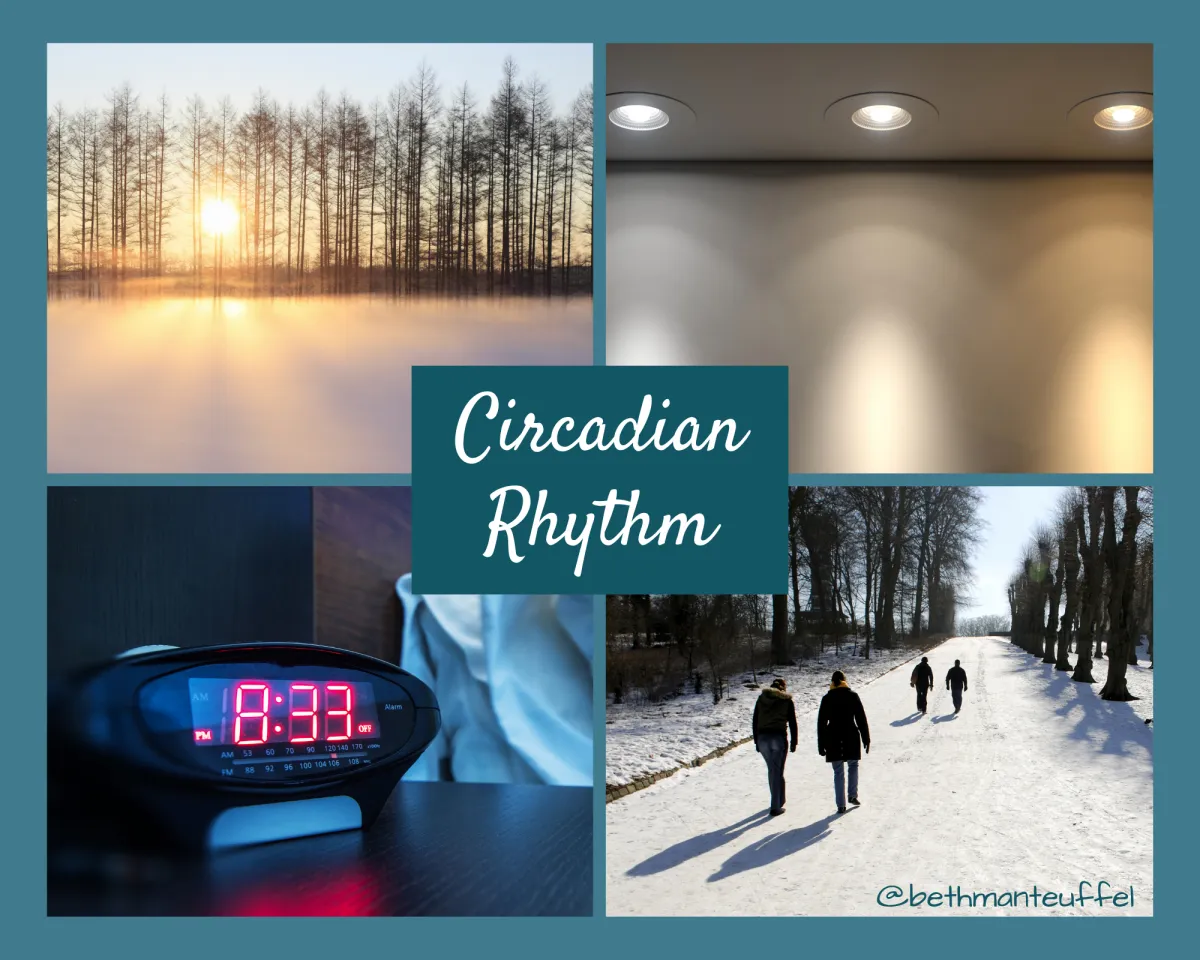Note: You may filter by category below. To use search feature for all categories return to main blog page here.

Circadian Rhythm: Part 2
This article includes an affiliate link. As an Amazon Associate I earn from qualifying purchases.
So let’s talk about light! The WELL Building Standard states “In addition to facilitating vision, light influences the human body in non-visual ways. Humans and animals have internal clocks that synchronize physiological functions on roughly a 24-hour cycle called the circadian rhythm.” It explains that light is one of the most important external cues to “keeping the body’s internal clocks synchronized in a process known as circadian photoentrainment.” Circadian lighting design is a feature in the WELL Building Standard and methods can be incorporated into our homes too.
Once indoors, windows will block certain wavelengths of light. Bright overhead daylight bulbs are great to use during the first several hours after wakening. As your day progresses transition to a warmer, dimmer light level. To cue to your body that the time for rest is approaching it helps to avoid overhead light and instead use lamps set lower in your field of vision.
When it is bed time avoid any light as best as possible until waking. Be wary of any electronic lights especially in your bedroom. Once your eyes have adapted to the dark they can pick up on the slightest bit of light. If you’ve ever experimented with your natural night vision you will find that red light is less disruptive to it, which is why head lamps have a red light mode. For example, I have found that a digital alarm with red numbers is less disruptive than those with blue numbers. I keep the alarm on the most dim setting and do not keep a phone in my bedroom. For computer use I use the program f.lux, which adjusts the screen color from bright to warm colors as the day progresses.
If you missed Part 1 of the Circadian Rhythm topic click here.
To receive future blog posts click the button above to opt-in. I also invite you to follow me on my Facebook™ business page, and in the Sustainability & Wellness Seekers Facebook™ Group, linked here. You are welcome to join the community conversations!
Copyright 2023 Beth Manteuffel All rights reserved


